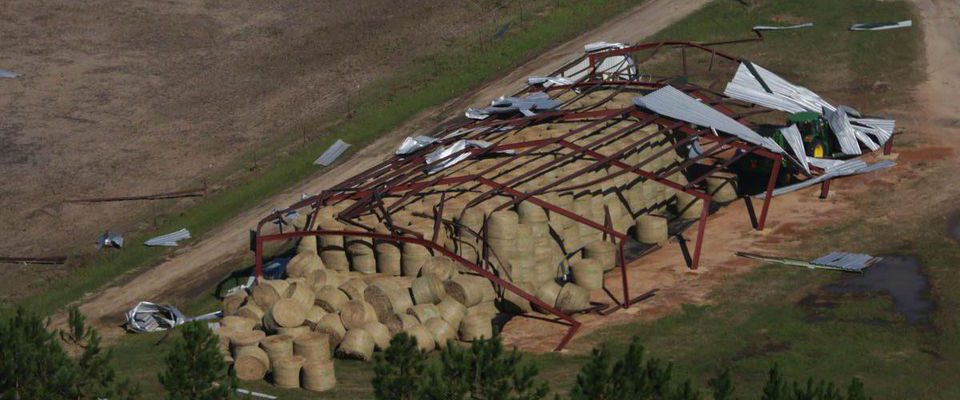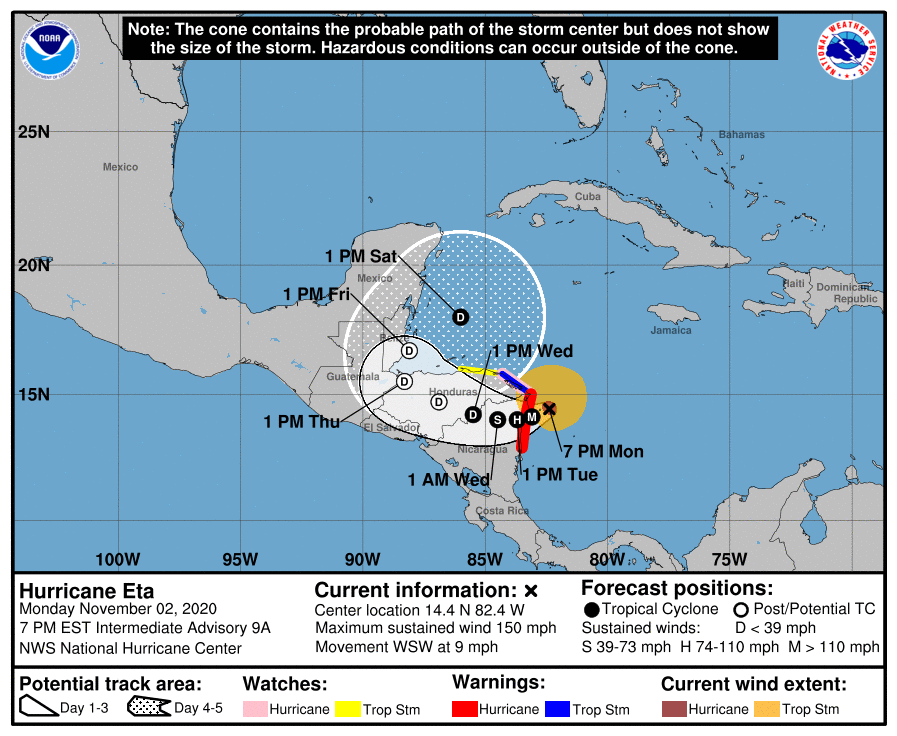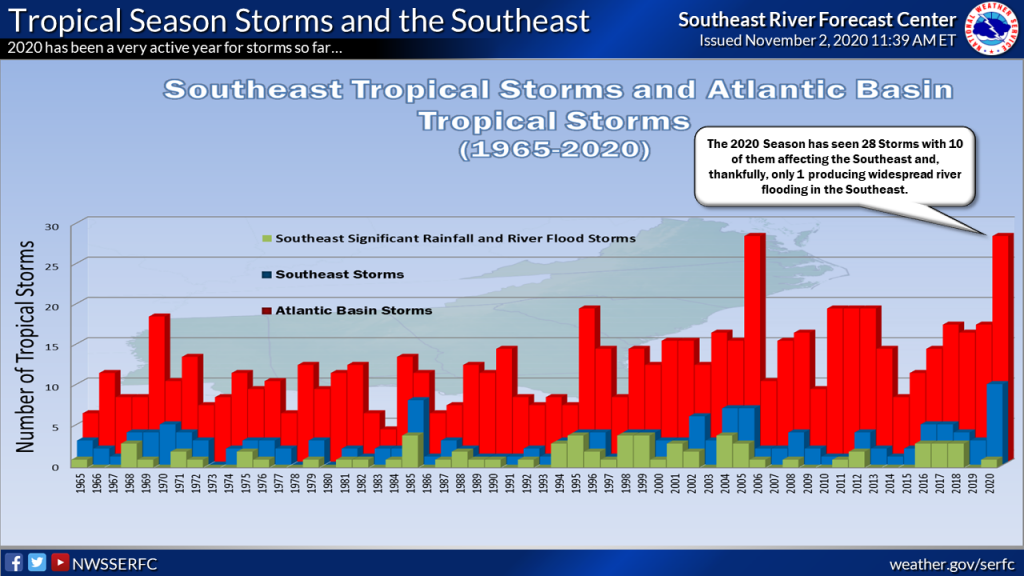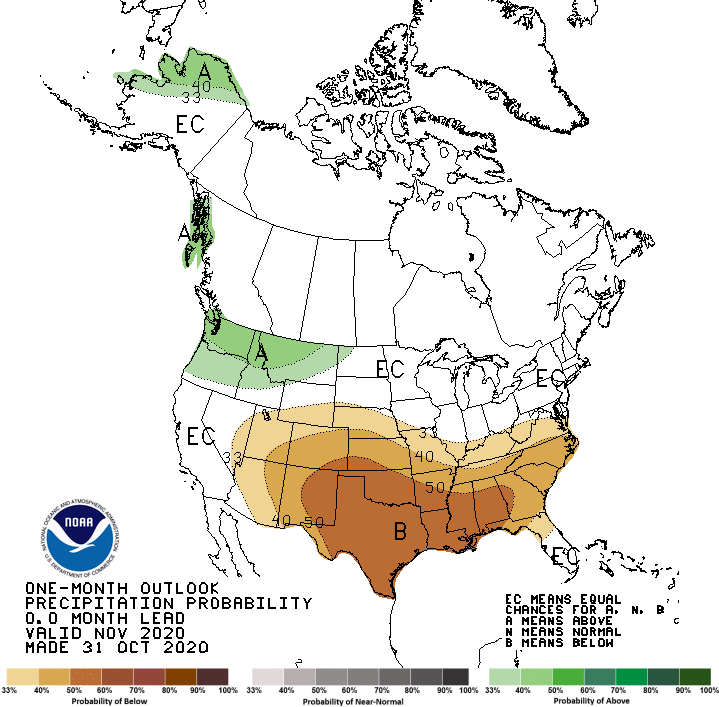-

If you have ever wondered about whether or not weather shown in the movies is real, you might enjoy this YouTube presentation on weather and the movies. It includes clips from five different movies that have significant weather in them, including “The Wizard of Oz” and “Twister”. The presenter, Ed Szoke, spends the first 9+…
-

While we are watching Eta move towards Central America, our farmers in parts of the Southeast are beginning the process of recovering from Hurricane Zeta, which moved through here just a few days ago. I know people in NE Georgia who were without power for 5 days after Zeta moved through (I was only out…
-

This morning Eta was just a tropical storm. As of 10 pm tonight, Eta is a major hurricane with sustained winds of 150 mph and getting stronger. It is moving slowly west and is expected to hit the Nicaraguan coast sometime Tuesday morning, with incredible winds, storm surge of up to 18 feet, and torrential…
-

The National Weather Service’s Southeast River Forecast Center posted a graphic this morning showing that of the 28 named storms in the Atlantic Basin this year, ten affected the Southeast. But only one of those, Sally, produced widespread river flooding, which is lower than some previous years. Of course, the season is not over yet,…
-

NOAA’s Climate Prediction Center released their final outlook for November yesterday. It shows that for the Southeast, warmer and drier conditions than normal are expected through the month, although there will be some cold periods, including tomorrow morning, which see frost in northern and more elevated parts of the region. This is expected due to…
-

The first-ever Eta became a hurricane at 11 pm and is moving westward in the Caribbean towards Nicaragua and Honduras. It may become a major hurricane before it makes landfall. Once it gets there, it is expected to drop up to 30 inches of rain in the mountainous terrain, which could cause tremendous flooding, landslides,…
-

The US Geological Survey has posted a link to their new but still experimental interactive data portal. It includes access to water data like streamflow, lake levels, and well levels, and also includes access to their weather data such as precipitation from their gauges and from radar as well as temperature. Check it out at…
Posted in: Sources of weather and climate data